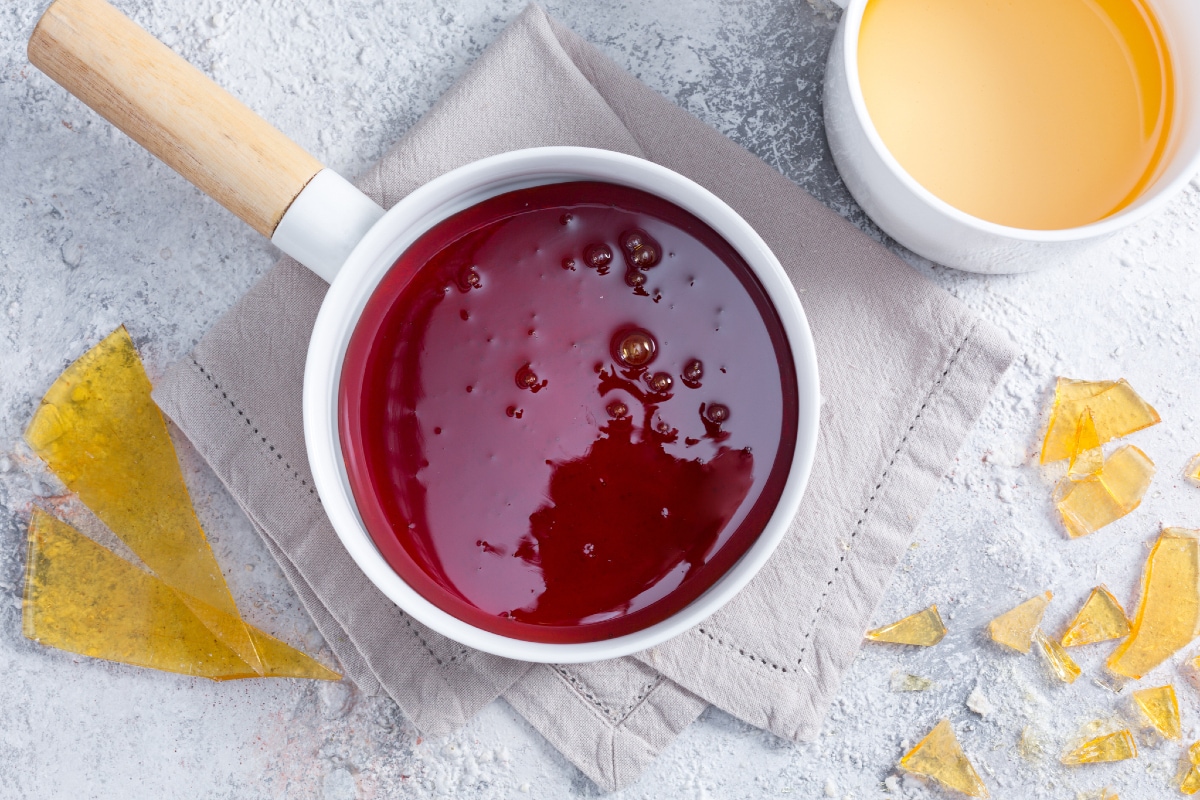Salted Caramel
- Difficult
- 20 min


Caramel is an important element for the preparation and decoration of many desserts. It is the base for croccante and is indispensable in spoon desserts like creme caramel or latte alla portoghese! How to prepare caramel at home? We reveal all the secrets to obtaining perfect caramel with two techniques. Dry caramel, using only sugar and a pan, suitable for those who have some familiarity in the kitchen; caramel with water, much simpler, suitable for everyone! In both cases, you will get a fluid caramel, perfect for many decorations and that solidifies as soon as it cools, so it should be worked while it's still very hot... paying close attention. To make caramel, in fact, sugar reaches high temperatures. We will show you when to stop to get a blonde caramel and a dark caramel!
Here are some caramel recipes to try:

To prepare dry caramel, get a steel pan with a double bottom. Pour 1-2 tablespoons of sugar from the total dose 1 and cook over very low heat 2 until the sugar starts to melt 3. It is important never to stir the caramel, as it could crystallize.

Add another 1-2 tablespoons of sugar 4 and wait until this has also caramelized. Continue this way by adding a little more sugar 5 and letting it melt 6 before adding more.

Use a thermometer and continue to cook the caramel 7 until you achieve the desired color. For blonde caramel, you need to reach 320°F 8, and for dark caramel, 356°F 9. We recommend never exceeding this temperature; otherwise, the caramel will taste burnt. However, you can stop at any point between the two indicated temperatures.

To prepare caramel with water, pour the sugar 10 and water 11 into a double-bottomed steel pan. Heat the syrup over low heat 12.

As soon as the sugar is completely dissolved and small bubbles start to form 13, the caramel will begin to color. You can also use a kitchen thermometer in this case to measure the temperature of the caramel. At 320°F, you will get blonde caramel 14, and at 356°F, you will get dark caramel 15. Always remember not to exceed this temperature to avoid burning it.

Regardless of the technique you choose to use, we recommend using the caramel as soon as it is ready.
You can pour it directly into molds if your goal is to prepare a spoon dessert like creme caramel. Do not wait too long, or the caramel will continue to cook with the heat of the pan and then solidify inside.
Alternatively, you can use the caramel to make a sheet: in this case, as soon as it is ready, you need to pour it onto a silicone mat or parchment paper 16. Do not touch the caramel because it will be very hot, and you do not need to spread it out; it will spread evenly by itself 17. All you need to do is wait for it to solidify at room temperature 18 before detaching it. Once hardened, you can break it up and use it for your decorations or blend it in a mixer and add it to a cream, for example!
Similarly, always on a silicone mat or parchment paper, you can make decorations by pouring the caramel with a spoon and creating swirls or designs, or you can use the caramel to make threads.
You can also use caramel to make caramelized hazelnuts. Using tongs, dip the hazelnuts one at a time into the caramel and place them on a silicone mat or parchment paper to solidify. You can make other types of caramelized fruit, fresh or dried, in the same way.
You can use caramel to decorate cream puffs: simply turn them upside down and dip the tip inside, always being very careful not to burn yourself.